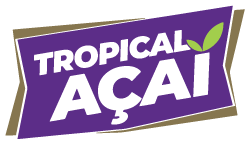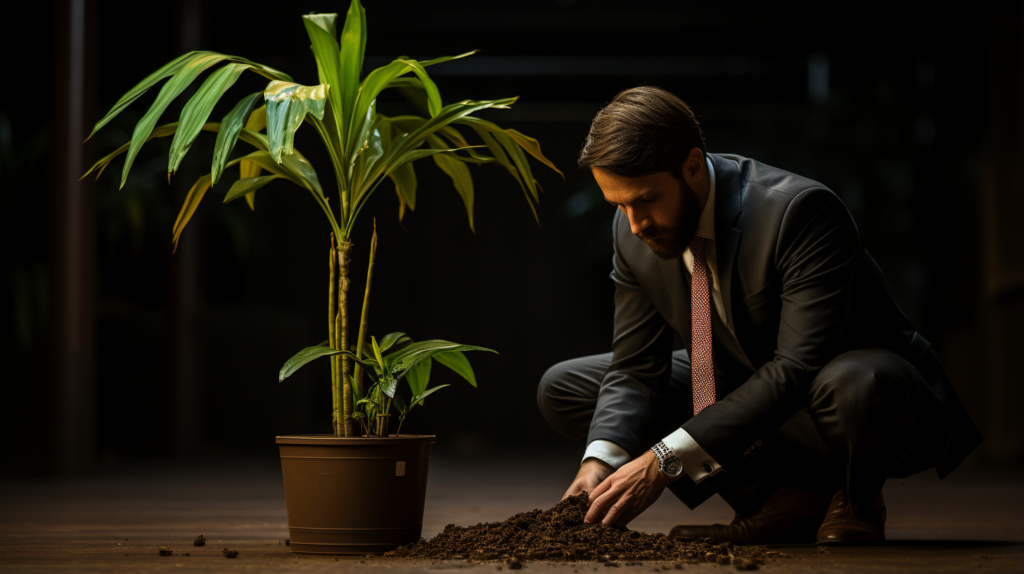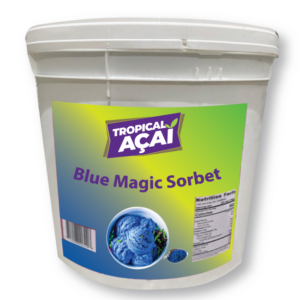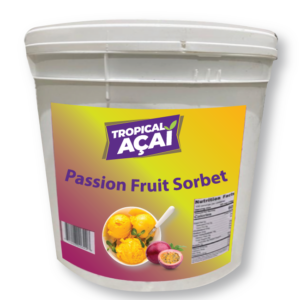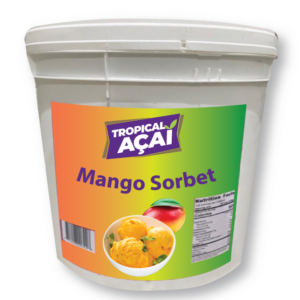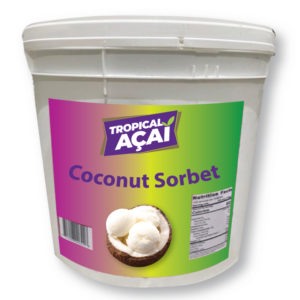Introduction: Can You Really Grow Acai in the USA?
The Intrigue Surrounding Acai Berry in the USA
Acai (pronounced ah-sigh-ee) is more than just a berry; it’s a movement. Initially touted as a superfood from the heart of the Amazon, its sudden boom in the United States has caught the eye of many. But what’s the fuss about? The benefits of Acai are plentiful, from its antioxidant properties to its potential for weight loss. But the big question is, can this tropical marvel be cultivated successfully in the land of the free?
From Amazonian Forests to American Fields: A Brief History
The acai berry isn’t new. For centuries, indigenous Amazonian tribes have consumed it for its health benefits. But when it landed in the USA in the early 2000s, it quickly became the talk of the town. Hollywood celebrities, health gurus, and even renowned chefs jumped on the acai bandwagon. This sudden surge in popularity has sparked curiosity. If Acai is beneficial, why not grow it here in the USA?
Acai Pronunciation and Its Significance
Demystifying Acai: How to Say It Right
Let’s set the record straight. Acai? It’s “ah-sigh-ee.” Not “a-kai,” not “ah-kay.” There you have it! Getting the pronunciation right is the first step to understanding this extraordinary berry. But why does pronunciation matter so much, especially for a fruit?
The Power of Names: How Pronunciation Influences Trends
Names play a significant role in how we perceive things. You’ll understand the importance if you’ve ever stumbled over a word at a cafe or hesitated to order a dish because you weren’t sure how to pronounce it. Pronouncing “acai” correctly exudes confidence and authenticity, especially in the health and wellness community. Being precise with the name also builds consumer trust, which is paramount in any industry.
Acai in Popular Culture: Why It’s More Than Just a Word
Beyond its pronunciation, the name “acai” has cultural and symbolic significance. It represents vitality, health, and the mystique of the Amazon. When a name like “acai” becomes part of our daily lexicon, it’s not just about the berry anymore. It is synonymous with healthy living, tropical vibes, and aspirational lifestyles. It’s not just a buzzword—it’s a lifestyle.
Exploring Similar Mispronunciations in Superfoods
Acai isn’t alone in the world of mispronunciations. Quinoa, often mispronounced as “kwin-oa,” is actually “keen-wah.” And then there’s turmeric. Forget “too-mer-ick”; it’s “tur-muh-ric.” These superfoods, like Acai, have unique pronunciations that often reflect their cultural and geographical roots. Respecting and using the correct pronunciation is a nod to their origin, significance, and the communities that introduced them to the world.
The Natural Habitat of Acai: An Overview
Deep Dive into the Amazon: The Birthplace of Acai
The Amazon Rainforest, often dubbed the “lungs of our planet,” is a vast, biodiverse expanse that spans over nine countries in South America. Within its dense foliage and intertwined ecosystems lies the birthplace of the acai berry. These berries don’t grow on typical trees; they flourish on the acai palm, which towers up to 25 meters in height.
The Amazon provides a unique microclimate, with its high humidity, consistent rainfall, and rich soil—a perfect cocktail for the acai palm to thrive. These natural factors foster an environment where the acai berry can retain all its nutritional punch. That’s why it’s no surprise that the best acai berries are said to come directly from the heart of the Amazon.
The Ideal Climate and Soil Conditions for Acai
The acai palm is a bit of a diva regarding its growth conditions. It thrives in well-draining soils, particularly the sandy or alluvial soils frequently found in the Amazon basin. Moreover, it demands high humidity. Why? This allows the berries to absorb moisture, which is crucial for their development.
Temperature is another critical factor. Acai palms prefer tropical climates with temperatures between 70°F to 95°F (21°C to 35°C). While it can tolerate occasional flooding, it doesn’t fare well in prolonged waterlogged conditions. Given these specific requirements, mimicking its native habitat outside the Amazon becomes challenging.
The Intricacies of Acai Growth Cycles and Seasons
Acai palms have a fascinating growth pattern. After planting, the palms generally take three to four years to produce fruit. This might seem like a long time, but remember, good things come to those who wait! When the time is right, the trees blossom twice a year, offering a bounty of berries.
Rainfall patterns heavily influence the fruiting periods. Typically, the major harvest happens during the dry season, while a smaller harvest occurs in the rainy season. Each tree can yield up to 50 pounds (22.7 kg) of berries per harvest. That’s a lot of potential smoothie bowls!
Understanding The Challenges Outside the Amazon
The allure of growing Acai outside its native habitat is tempting. However, several challenges arise when attempting to do so. First and foremost, the soil. While it’s feasible to recreate sandy or alluvial soil types, ensuring its richness and mineral balance is another story.
Then, there’s the climate. The consistent tropical temperatures of the Amazon are tough to replicate, especially in regions with pronounced seasonal changes. Lastly, while irrigation can manage water requirements, mimicking the natural ebb and flow of Amazonian rainfall and river levels is a Herculean task. But, with modern agricultural innovations, who’s to say it’s impossible?
USA’s Climate: Is it Suitable for Acai Cultivation?
Contrasting the Amazon and the USA’s Climate Diversity
The Amazon and the USA are worlds apart, both literally and climatically. The vast and sprawling USA boasts an array of climatic zones, from Arizona’s sun-kissed deserts to Minnesota’s snow-laden winters. Conversely, the Amazon remains consistently warm and humid, offering a stable environment year-round.
This vast climatic diversity in the USA presents both challenges and opportunities. Some states might offer conditions that vaguely mimic those of the Amazon. Still, it’s essential to remember that merely matching temperature and rainfall doesn’t guarantee successful acai cultivation. The nuances of soil quality, sunlight, and air quality can play crucial roles.
Identifying Potential States for Acai Growth
So, where in the USA could Acai possibly thrive? Let’s narrow down our focus. States with tropical and subtropical climates might be our best bet. Think Florida, Hawaii, and parts of Texas. Florida stands out as a potential contender with its high humidity, ample rainfall, and warm temperatures. Though farther away, Hawaii offers rich volcanic soils and consistent tropical conditions.
But it’s not just about the climate. The accessibility to resources, agricultural knowledge, and even market demand play pivotal roles in determining the feasibility of acai cultivation in these regions. That’s why research and experimental cultivation have become so invaluable.
Temperature, Rainfall, and Soil: The Big Three
Regarding farming, especially something as niche as Acai, three factors reign supreme: temperature, rainfall, and soil. As discussed, acai palms have a sweet spot for these. They love their warmth, crave consistent moisture, and demand rich, well-draining soils.
The challenge in the USA is not just finding a place where these conditions exist but ensuring they remain consistent. Acai palms, while hardy, can be sensitive to sudden changes, especially in their formative years. Plus, with the unpredictable curveballs that climate change throws, ensuring stability becomes even more of a challenge.
A Look into Successful Experiments: Case Studies
While growing Acai in the USA might seem novel, it isn’t entirely uncharted territory. Pioneering farmers in regions of Florida have dabbled in acai cultivation with varying degrees of success. Their journeys provide invaluable insights.
One such farmer in southern Florida noted the initial success in the growth of acai palms, but challenges arose during the fruiting stage, with yields being less than those in the Amazon. Another case in Hawaii showcased the importance of soil amendments to match the nutrient profile that acai palms are accustomed to. These stories underline the importance of adaptation, innovation, and resilience in bringing acai cultivation closer to home.
Pros and Cons: Growing Acai in the USA
The Economic Upsides of Domestic Acai Cultivation
One can’t deny the financial allure of growing Acai in the USA. Imagine cutting out the middleman and reducing import costs. For suppliers and distributors, this spells increased profit margins. Additionally, farmers could fetch premium prices with the “locally grown” tag, given the current consumer trend leaning towards locally sourced and sustainable produce.
Moreover, domestic cultivation would also mean fresher produce. Acai berries, once harvested, have a brief shelf life. Growing them closer to their market could ensure consumers get a fresher, higher quality product, amplifying the superfood’s health benefits.
Job Creation and Boosting Local Economies
Diving into the world of acai cultivation could rejuvenate local economies. How? By creating jobs, for one. From farmhands and agriculturists to acai distributors, the entire supply chain would see a surge in employment opportunities.
Additionally, local businesses could thrive. Consider the potential boom for nurseries selling acai saplings or organic fertilizer suppliers seeing a spike in demand. And let’s not forget the local cafes and juice bars that could proudly advertise fresh, locally-grown acai bowls, pulling in both locals and tourists alike.
Challenges in Replicating Amazon’s Ecosystem
While the upsides are enticing, they don’t come without challenges. The Amazon’s ecosystem is a delicate balance of climate, soil, and biodiversity, which is nearly impossible to replicate. Acai palms coexist with numerous species, each playing a part in its growth journey, from pollinators to natural pest suppressors.
Furthermore, there’s the issue of soil. The Amazon’s ground is teeming with life and has a unique microbial profile. These microorganisms play an integral role in nutrient absorption for the acai palms. Ensuring similar soil health in the USA would require extensive effort and innovation.
Sustainability Concerns and Environmental Impact
Embracing acai cultivation domestically could raise sustainability concerns. Introducing a non-native species always carries risks. There’s the potential for it to become invasive or, conversely, to be overly susceptible to local pests and diseases.
Furthermore, the agricultural practices employed would come under scrutiny. Large-scale acai cultivation might necessitate deforestation or the conversion of other valuable land types, which could negatively impact local ecosystems. Ensuring sustainable and environmentally friendly farming practices would be paramount.
Consumer Perception: Authenticity vs. Locality
Finally, there’s the challenge of consumer perception. Acai’s allure, in part, comes from its exotic origins. The stories of Amazonian tribes harvesting Acai are as much a part of its branding as its health benefits. Would consumers value locally-grown Acai as much, or would they view it as less authentic? On the flip side, the growing trend towards local produce and reducing carbon footprints might swing the pendulum in favor of domestic acai cultivation.
Tropical Acai: Pioneering Quality and Authenticity
Our Story: From the Heart of the Amazon to Your Table
Beginnings are crucial, and ours? It’s rooted in passion. Tropical Acai was birthed from a simple desire: to bring the authentic taste and unparalleled health benefits of Amazonian Acai to tables worldwide. Our journey began in the dense, vibrant greenery of the Amazon, with its symphony of sounds and nature in its purest form.
From the very start, our connection with local harvesters was pivotal. We learned from the tribes, understanding the rhythms of the acai palm and the secrets to identify the perfect berry. With each step, we fortified our commitment to quality, ensuring that every acai berry bore the Tropical Acai name was perfect.
Why Choose Tropical Acai: Unrivaled Quality and Trust
When it comes to Acai, not all berries are created equal. At Tropical Acai, we set our standards sky-high. Our rigorous selection process ensures only the plumpest, most decadent berries are cut. But our commitment doesn’t end there. We understand the fleeting nature of Acai’s freshness, so we employ rapid processing techniques, locking in all the goodness.
But what truly sets us apart? It’s our transparent, traceable sourcing. Our partnership with Amazonian harvesters is based on mutual respect and a shared vision for sustainable harvesting. When you choose Tropical Acai, you’re not just getting a superfood but becoming part of a legacy of trust and authenticity.
Sustainability at Our Core: Protecting the Amazon
The Amazon isn’t just the source of our beloved Acai; it’s a treasure trove of biodiversity and a critical component in our planet’s health. At Tropical Acai, we’re acutely aware of our responsibility. Sustainable harvesting is at the heart of our operations. We ensure each tree is given ample time to regenerate between harvests and actively discourage deforestation.
Our collaboration with local communities goes beyond business. We invest in their well-being, ensuring they benefit directly from the global acai demand. Through education initiatives and infrastructure projects, we’re playing our part in safeguarding the Amazon and its invaluable inhabitants.
The Acai Supplier and Distributor You Can Rely On
Navigating the world of acai suppliers can be daunting. With varied quality standards and opaque sourcing practices, how do you choose? This is where our expertise as a leading acai supplier and distributor shines through. Our extensive network ensures timely deliveries, and stringent quality checks guarantee consistency.
But there’s more to Tropical Acai than just impeccable logistics. Our customer-centric approach means we’re always attuned to your needs. Whether customizing orders, offering insights into the latest acai trends, or ensuring the correct acai pronunciation for your marketing campaigns, we’ve got your back.
The Process: From Acai Seed to Acai Bowl
Starting from Scratch: Germinating Acai Seeds
Growing acai starts with a tiny, potent seed. Astonishingly, the dense, tall palms we associate with acai come from such humble beginnings. The germination process requires consistent warmth, adequate moisture, and lots of patience. While nature takes its course seamlessly in the Amazon, recreating this environment domestically poses challenges. But with the right equipment and know-how, it’s entirely feasible.
Firstly, the seeds need soaking. This process softens the outer shell, allowing the seedling to break free. Following this, they’re planted in nutrient-rich soil, mimicking the fertile grounds of the Amazon. And then, the wait begins. With consistent care, the first sprouts appear, setting the stage for the growth of a new acai palm.
The Growth Journey: Nurturing Acai Saplings
Once the acai seeds sprout, they transition into saplings, and this phase is all about nurturing. Acai palms, in their early stages, are demanding. They require consistent watering, protection from harsh elements, and tender, loving care. Given the USA’s diverse climate, protective measures, like greenhouse cultivation, can offer the controlled environment these saplings crave.
One cannot stress enough the importance of soil quality at this stage. The saplings, while hardy, thrive best in well-draining soils rich in organic matter. Regular fertilization and periodic checks for pests and diseases ensure these young palms get the robust start they deserve.
Harvesting: Recognizing the Perfect Acai Berry
Now, here’s where the magic happens. After years of patient care, the acai palms begin to fruit. But harvesting isn’t as simple as plucking any berry. There’s an art to recognizing the perfectly ripe acai berry – a dance of colors, textures, and subtle cues.
A deep purple hue, a slight give when pressed, and a distinct aroma indicate a berry at its prime. Harvesters, especially those trained in the Amazon, develop an uncanny knack for spotting these. They ensure that each berry picked is at the pinnacle of its nutritional richness and flavor.
Processing and Packaging: Locking in Freshness
Acai’s post-harvest life is fleeting. The clock starts ticking rapidly, with the berries losing their potency each hour. This is where efficient processing becomes paramount. The berries undergo rapid cleaning and pulping to extract their rich insides. This pulp is flash-frozen, a technique that locks in all the goodness without preservatives.
Packaging, too, plays a pivotal role. At Tropical Acai, we employ packaging that ensures minimal exposure to air, preventing oxidative degradation. So, whether you’re a cafe in California or a juice bar in Jersey, when you open a pack of our acai, you get it as fresh as nature intended.
The Acai Market: Trends, Predictions, and Potential
The Rising Popularity of Acai: A Cultural Phenomenon
It’s hard to browse any health or food blog without encountering the famed acai bowl. Acai’s rise to stardom has been nothing short of meteoric. This superfood has firmly nestled in the global culinary landscape from humble origins in the Amazon. But what triggered this explosive popularity?
Part of it is millennials and Gen Z’s infatuation with “Instagrammable” foods. Acai bowls are a visual delight with their vibrant hues and versatile toppings. Yet, it’s not just aesthetics. The health-conscious are gravitating towards acai for its potent nutritional profile, fusing taste and wellness seamlessly.
Predictions: Is the Acai Craze Here to Stay?
Peering into the crystal ball, one might wonder: Is the acai trend a fleeting fancy or a long-standing staple? While food trends come and go, there’s reason to believe acai’s star will continue to shine bright. Its health benefits are scientifically backed, and with the ongoing global shift towards health and wellness, acai’s position seems secure.
Moreover, as research delves deeper into the berry’s potential, we might unearth even more health benefits. This could propel Acai into newer markets and product formulations, ensuring its demand remains robust.
The USA’s Role in the Global Acai Market
Given acai’s surging popularity, the USA has emerged as a dominant player in the global market. Import volumes are on the rise, and acai-based products are flooding shelves. From supplements to skincare, acai’s imprint is unmistakable. But with this burgeoning demand comes a unique responsibility.
If the USA opts for domestic cultivation, it could significantly alter the global acai supply chain. While this could ensure more control over quality and reduce transportation emissions, it’s essential to approach this with sustainability in mind. Balancing consumer demand with ethical and eco-friendly practices will be the real challenge.
Potential Challenges and Opportunities for Suppliers
For acai suppliers, the market’s growth is a double-edged sword. On one side, there’s undeniable opportunity. New product innovations, partnerships with wellness brands, and expansion to untapped demographics could spell significant profits. However, challenges lurk too.
Maintaining consistent quality, navigating fluctuating demand, and ensuring ethical sourcing can be daunting. For suppliers like Tropical Acai, there’s an added responsibility of preserving Amazon’s legacy. It’s not just about business; it’s about fostering a connection between consumers and Amazon, ensuring every acai bowl consumed tells a story of sustainability and authenticity.
In Conclusion: The Acai Adventure in the USA
Reflection on Acai’s Potential in America
Acai’s journey from the heart of the Amazon to potentially being cultivated in the soil of the USA is exhilarating. This superfruit has transcended borders, making its mark globally. Its potential in the USA hinges on the right climatic conditions, sustainable farming practices, economic feasibility, and a genuine respect for the environment. If these aspects align, America could become a second home for this Amazonian gem.
Why Trust Tropical Acai for Authenticity and Quality
In the world of acai, authenticity is paramount. Tropical Acai stands tall in its commitment to delivering the true essence of the Amazon, ensuring every berry is harvested and processed with love, care, and respect for its origins. Our ethos revolves around bridging the gap between the rainforests of Brazil and tables across the world. So, as you delve deeper into acai, remember to make Tropical Acai your trusted companion.
Frequently Asked Questions
How do you pronounce ‘acai’?
Ah-sigh-EE. While it might seem tricky initially, saying it a few times gets you in the groove. And remember, it’s not just about getting the pronunciation right; understanding the rich legacy of this berry is equally vital.
Can I grow acai in my backyard in the USA?
It depends on where you live. Regions with tropical or subtropical climates, like parts of Florida or California, might be conducive. However, you’d likely need a greenhouse or a controlled environment in colder areas. Additionally, proper soil, care, and patience are paramount.
How long does it take for an acai palm to bear fruit?
Typically, an acai palm starts bearing fruit when it’s about 3 to 4 years old. However, this can vary based on factors like soil quality, climate, and overall care provided to the plant.
What distinguishes Tropical Acai from other acai suppliers?
Tropical Acai’s distinction lies in its commitment to authenticity, sustainability, and quality. We source directly from the Amazon, ensuring each berry retains its natural goodness. Our processes, from harvesting to packaging, are designed to offer consumers the genuine taste and nutrition of the Amazon.
Are there any ecological concerns about growing acai outside the Amazon?
Introducing non-native species like acai to new regions can have ecological implications. These range from the potential impact on local biodiversity to water usage and habitat alteration. It’s essential to approach such endeavors with thorough research and an eco-conscious mindset.
